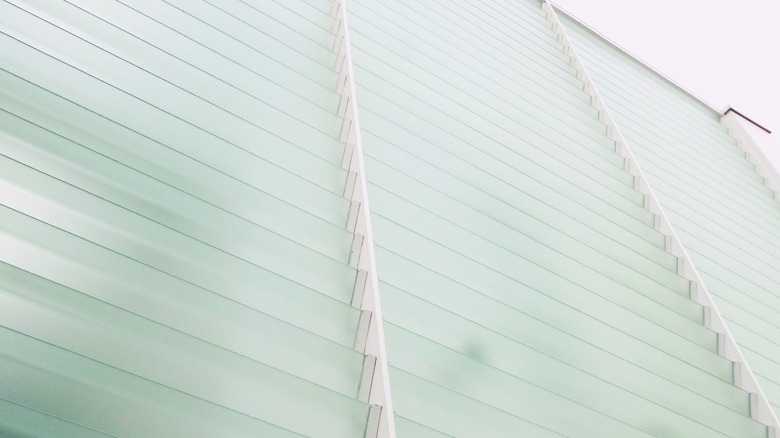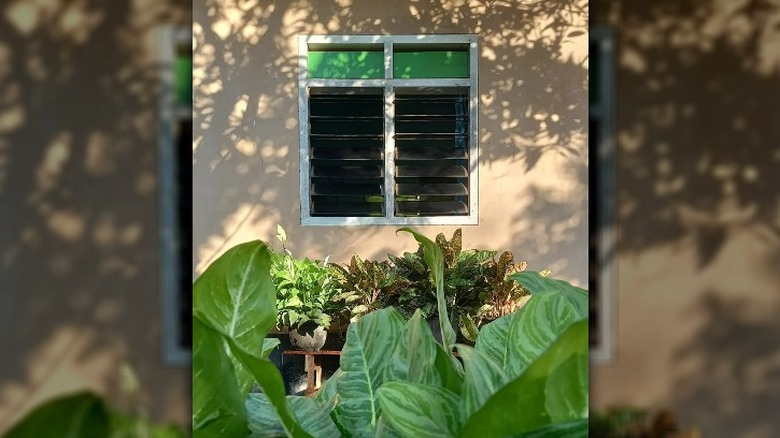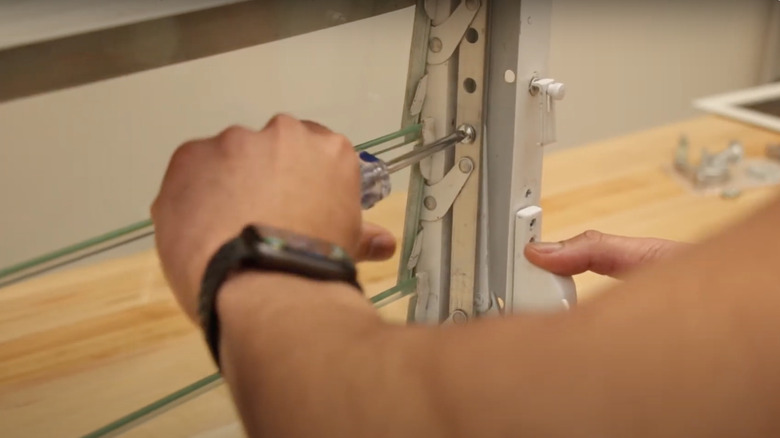What Are Jalousie Windows, And Why You Need Them In Your Home
Jalousie windows, not to be confused with louvers, are a type of window characterized by multiple horizontal glass slats set within a metal or wooden frame. These slats are angled to allow maximum airflow and ventilation while still giving a bit of privacy. They're typically operated by a crank or knob and open and close in unison.
While their heyday peaked during the mid-20th century, the jalousie window was and continues to be found primarily in warmer, tropical environments because they're best suited for harnessing the trade winds as the main source of air conditioning. These windows have a distinctive aesthetic, often considered retro or vintage, and are occasionally found in travel trailers and mobile homes, especially those with a nostalgic theme. Just as with anything, jalousie windows have one or two minor drawbacks. But if you like the sound of rain and live in an area where the weather is a bit warmer, you should consider adopting this style.
Who jalousies are good for
Jalousie windows aren't meant for every climate. They're mainly found in coastal homes or where the weather tends to be warm and or humid since they provide excellent ventilation and can be adjusted to control the amount of airflow throughout your home. They're great for sunrooms and bathrooms, built into storm doors, and are sometimes installed in mobile homes due to their affordability and space savviness. Jalousie windows have a vintage aesthetic, so it's not uncommon to see them on travel trailers, especially vintage-themed ones.
While jalousies are great for controlling nature's air conditioning, it's a split decision when it comes to energy efficiency. If installed properly, they allow for a good cross breeze, which means your air conditioner won't be running all day long in an attempt to cool down your home. On the flip side, these windows aren't particularly great at preventing air seepage because the slats don't create an airtight seal. They also tend to have lower insulating value when compared to standard or double-paned glass. While older jalousie windows can sometimes pose a security risk, newer generations are controlled by Bluetooth and help keep the inside temperature consistent through temperature control sensors and preset timers.
How to clean and replace broken panels
Jalousie windows aren't incredibly difficult to clean, but it can become a project depending on how deep of a clean you want. The less time-consuming method is to simply spray each slat with a one-to-one mixture of denatured alcohol and water and then wipe them down with a microfiber cloth for a streak-free appearance. The more tedious version can also go hand-in-hand with replacing any broken slats. Depending on the location, this could involve removing a window screen and then removing each tempered glass slat, thoroughly cleaning it to remove the potential gunk buildup on the clips, and then carefully reinstalling them.
Jalousie and or louver windows are relatively easy to replace, depending on how the slats are secured. First, remove the slat by unscrewing them from the window pane. Then, gently replace the damaged glass with a new slat. It's recommended to use sealant glue for those who have metal tabs. Also, always wear protective gloves when dealing with broken or cracked glass.


